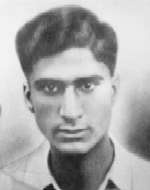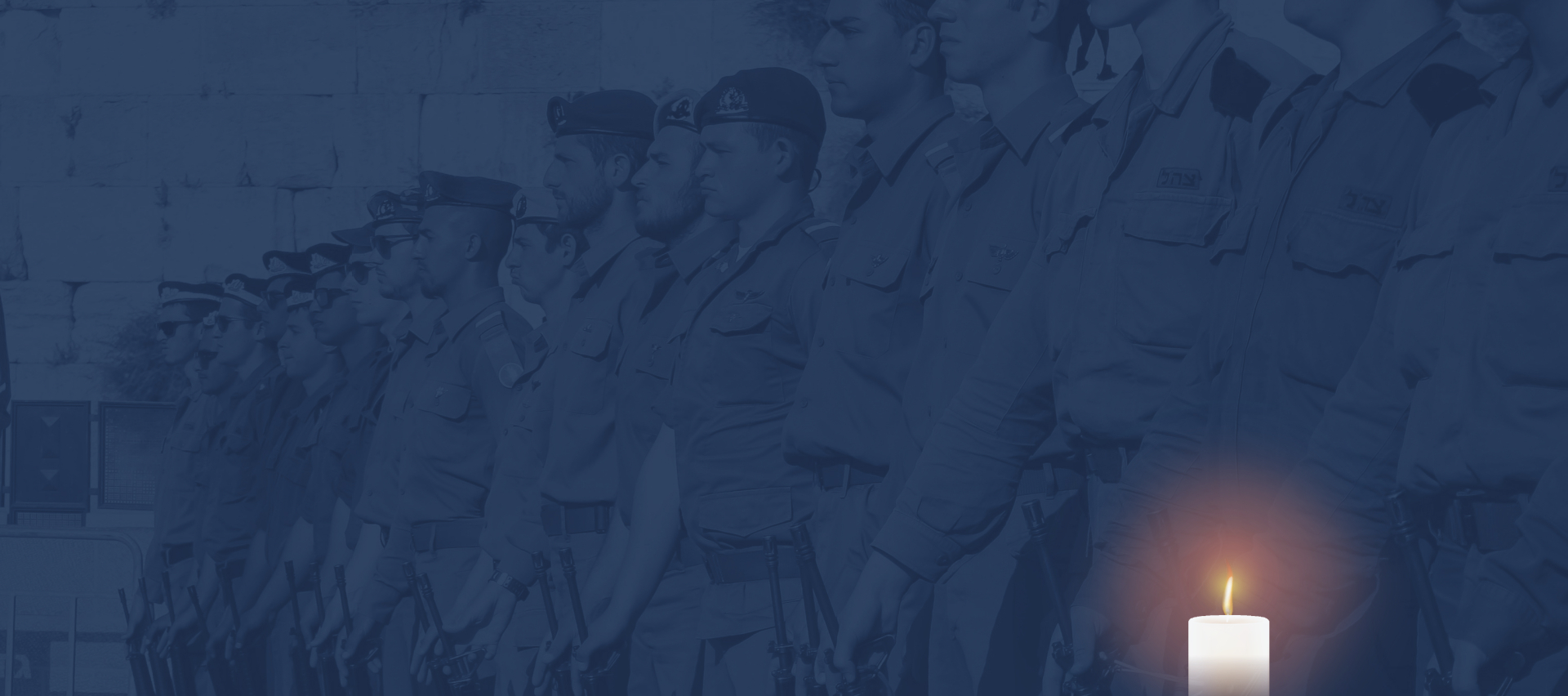,אֵ-ל מָלֵא רַחֲמִים, שׁוכֵן בַּמְּרומִים, הַמְצֵא מְנוּחָה נְכונָה
,עַל כַּנְפֵי הַשְּׁכִינָה בְּמַעֲלות קְדושִׁים, טְהורִים וְגִבּורִים
כְּזֹהַר הָרָקִיעַ מַזְהִירִים, לְנִשְׁמות חַיָּלֵי צְבָא הֲגָנָה לְיִשְׂרָאֵל


,אֵ-ל מָלֵא רַחֲמִים, שׁוכֵן בַּמְּרומִים, הַמְצֵא מְנוּחָה נְכונָה
,עַל כַּנְפֵי הַשְּׁכִינָה בְּמַעֲלות קְדושִׁים, טְהורִים וְגִבּורִים
כְּזֹהַר הָרָקִיעַ מַזְהִירִים, לְנִשְׁמות חַיָּלֵי צְבָא הֲגָנָה לְיִשְׂרָאֵל


Son of Rivka and Aaron. He was born on 21 August 1924 in Petach Tikvah, a descendant of the veteran Bombay family. He studied at the “Netzach Israel” elementary school and was among the instructors of the “Nir” battalion in the “Hashomer Hatzair” branch in his home. Yehuda was a man of letters, orderly and a lover of nature. Awake, honest and loyal to his movement, and many predicted him greatness. At the end of 1941 or early 1942, he was drafted into the Hagana and swore allegiance to him at a ceremony held in Petach Tikvah at the PIKA school, where Yehuda fell during his service on the eve of Passover, A few days earlier, on April 5, 1942, he and members of his movement went on a journey to Masada and Ein Gedi, the first trip of Hashomer Hatzair with Shmaryahu Gutman to the Judean Desert, which was supposed to last six days. Of the 150 members of the movement – boys aged 16-17 – and their escorts began in the village of Bani Na’im, east of Hebron, where they arrived by bus from Jerusalem, and crossed the desert in a crooked way accompanied by camels carrying water and equipment. After two and a half days they reached the peak of Masada, where they met on a trip of the Hanoar Haoved movement, which took a similar route, but in the opposite direction, the days of the British Mandate in Palestine, and the possession of weapons without a permit was prohibited. Members of Hashomer Hatzair were few, four of the escorts of the Hanoar Haoved youth movement, Palmach members armed with weapons and grenades, accompanied the Hashomer Hatzair members. When they left Masada, the travelers went to rest in the oases of Ein Gedi, the next destination being Kalia in the north of the Dead Sea. But the trip ended earlier than planned because of a disaster: the campers lit a bonfire to warm up a little before they set out for the road, set for two o’clock in the morning. One of the grenades accidentally fell into the fire and within seconds exploded. Avi Navon, a member of Kibbutz Lahav, who investigated the events, said: “… Suddenly, a huge explosion, a deafening noise, sparks flew in the air, the fire was scattered, many bent and bent instinctively for fear of being shot, waiting for another noise. Two, and it turned out that there was no continuation of the explosion, only one, but so terrible and strong, after the noise and a second of silence, the air filled with cries of pain. ” Yehuda was seriously wounded and died shortly afterwards. “He managed to shout ‘Mom, Mama,’ and he fell silent,” recalls poet Natan Yonatan, who was then the group’s guide. Another seven boys and a girl were killed as a result of the grenade explosion, and dozens were wounded. The two heads of the trip began to run toward Kalia, forty miles away, to call for help, and on their way they had to overcome robbers. The wounded and the other apprentices remained in the area for almost ten hours. When the sun rose, some of them ran to the nearby hills opposite the Dead Sea and signaled with sheets and blankets to boats from the potash factory that were sailing in the sea, but they did not notice them. It was not until around nine in the morning that barges arrived to rescue the wounded, when an improvised stretcher journey began from blankets, poles and acacia trees to the shore. The travelers were brought to Kalia, where ambulances, journalists, leaders of Hashomer Hatzair, public emissaries and worried parents were waiting for them. The victims were evacuated to Hadassah Hospital on Mount Scopus in Jerusalem. Yehuda was eighteen years old when he fell. He was brought to eternal rest in the Segula cemetery in Petah Tikva, together with his friend Balfour Son of-Nissim. Hundreds accompanied them on their final journey – workers, residents and youth. A few days later, their friend Mordechai Polchik, who was also injured in the incident, was buried alongside them and died of his wounds in the hospital. Towards the thirtieth day of the disaster, the Hashomer Hatzair leadership issued the booklet “Because we went to Masada,” which was dedicated to the memory of those who perished. AIf the lines devoted to Yehuda and his friends Mordechai and Balfour were: “… I will not know your childhood, and no one will tell me, so you will be the first of your own, the years you spent in the arms of my father and mother, and then in the empty arms of life. When the light-yellow lamp began to shed its gloomy light for us, then you began to embroider a different life for you, looking for a path of your own to the truth. The honesty that once in you – the integrity of youth, it does not know to give up, that it is true to copy mountains to reach the truth of conscience, oh Strange, that the three of you have fallen, as if some impenetrable fate has connected you and held you together … You would belong to the same kind of people who do not know how to write about life: they We know how to live them, in all their depth, thoroughly … You have walked with surprise, without a blessing of separation … We will remain in our memory, only in memory, we are still alive, your image is with us, with the love of friends and with pain. ” The “Ein Gedi disaster” stirred up the Jewish Yishuv in the early 1940s and drew harsh criticism of the adventurism of the pioneering youth movements. A year after the disaster, Ein Gedi embarked on a second journey by Hashomer Hatzair, whose followers marched from Negba to Masada and Ein Gedi, and set up an improvised Gilad on the banks of Nahal Arugot, near Tel Goren, in the place of the children’s death. The inscription was written by Nathan Yonatan in the spirit of the words of the Greek poet Simonides: “Passerby, Doom!” Esther Esman, Zvi Reisenberg, Balfour Son of-Nissim, Yehuda Pult, Mordechai Polchik, Moshe Son of Ezra, Michael Fuchs and Uri Arab Hashomer Hatzair immigration to Masada, Pesach 5702. They set up paths, the journey did not stop. “Every year, on Memorial Day for Israel’s Fallen Soldiers, a ceremony was held by the Petah Tiqwa municipality, in part for the fallen before the establishment of the state, opposite the grave of the three

